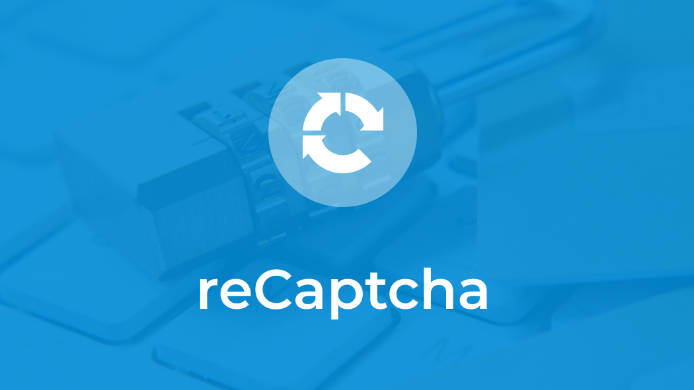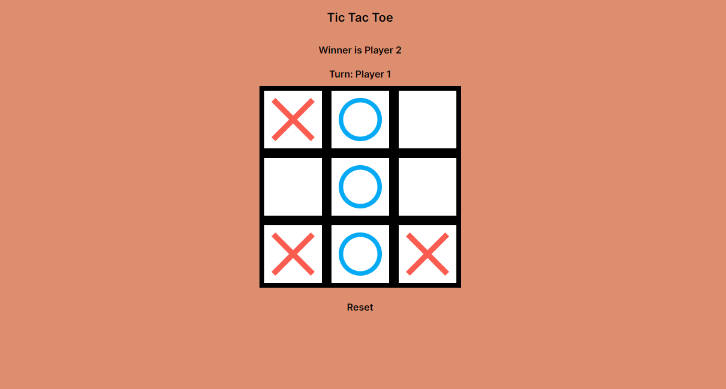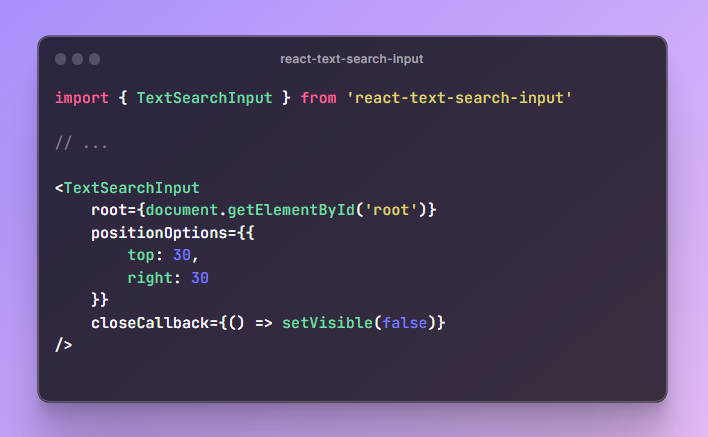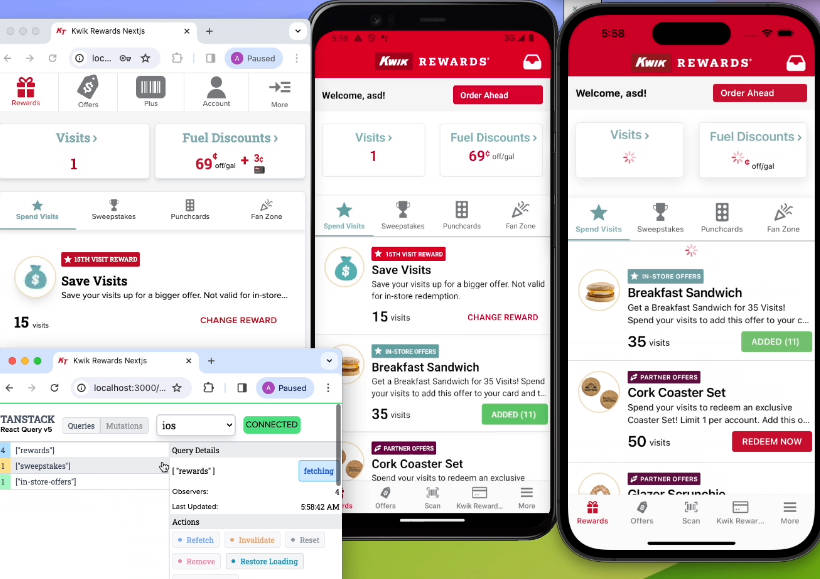? React Google ReCaptcha Ultimate
tool that easily and quickly add Google ReCaptcha for your website or application
Install
$ npm i react-google-recaptcha-ultimate
# or
$ yarn add react-google-recaptcha-ultimate
? Philosophy
? React Google ReCaptcha Ultimate this is a library that will allow you to easily and quickly add Google ReCaptcha for your website or application. The main difference from other libraries is that all current versions of Google ReCaptcha are supported here.
Features
- Support all recaptcha versions – support v3, v2-checkbox, v2-invisible
- Enterprise mode – support enterprise
- TypeScript support out of the box – full typed package
- SSR – package work with server side render
Usage
Install ? React Google ReCaptcha Ultimate with npm or yarn
$ npm i react-google-recaptcha-ultimate
# or
$ yarn add react-google-recaptcha-ultimate
V3
Google ReCaptcha v3 returns a score for each request without user friction. The score is based on interactions with your site and enables you to take an appropriate action for your site.
import { GoogleReCaptchaProvider } from 'react-google-recaptcha-ultimate';
const root = ReactDOM.createRoot(document.getElementById('root') as HTMLElement);
root.render(
<GoogleReCaptchaProvider
type="v3"
siteKey="Your recaptcha sitekey"
>
<App />
</GoogleReCaptchaProvider>
);
V2 invisible
Google ReCaptcha v2 invisible does not require users to solve any puzzles or enter any codes. Instead, it runs in the background and analyzes user behavior on the web page to determine if they are genuine users or potential bots.
import { GoogleReCaptchaProvider } from 'react-google-recaptcha-ultimate';
const root = ReactDOM.createRoot(document.getElementById('root') as HTMLElement);
root.render(
<GoogleReCaptchaProvider
type="v2-invisible"
siteKey="Your recaptcha key"
>
<App />
</GoogleReCaptchaProvider>
);
V2 checkbox
When a user interacts with the Google ReCaptcha v2 checkbox, advanced algorithms analyze their behavior to distinguish between humans and bots. If the system suspects suspicious activity, additional challenges may be presented, such as image selections or puzzle-solving tasks.
import { GoogleReCaptchaProvider, GoogleReCaptchaCheckbox } from 'react-google-recaptcha-ultimate';
const root = ReactDOM.createRoot(document.getElementById('root') as HTMLElement);
root.render(
<GoogleReCaptchaProvider
type="v2-checkbox"
siteKey="Your recaptcha key"
>
<GoogleReCaptchaCheckbox
onChange={(token) => {
console.log(token);
}}
/>
</GoogleReCaptchaProvider>
);
Checkbox component
| Props | Type | Default | Required? | Note |
|---|---|---|---|---|
| id | String | No | Id of component | |
| action | String | No | An action name is used to describe user-initiated events. More info | |
| className | String | No | Styles for component | |
| container | String or HTMLElement | No | Container ID where the recaptcha badge will be rendered | |
| callback | () => void | No | The name of your callback function, executed when the user submits a successful response. The g-recaptcha-response token is passed to your callback. | |
| errorCallback | () => void | No | The name of your callback function, executed when reCAPTCHA encounters an error (usually network connectivity) and cannot continue until connectivity is restored. If you specify a function here, you are responsible for informing the user that they should retry. | |
| expiredCallback | () => void | No | The name of your callback function, executed when the reCAPTCHA response expires and the user needs to re-verify. | |
| language | String | No | optional prop to support different languages that is supported by Google Recaptcha. See | |
| theme | dark or light |
light |
No | The color theme of the widget. |
| size | compact or normal |
normal |
No | The size of the widget. |
| onChange | (token: string) => void | No | When called with string (token), it means token retrieved. When called with false as an argument, it means the response expired and the user needs to re-verify. When called with Error, it means an error occurred and the widget cannot continue (usually network disconnection) |
Enterprise
Google ReCaptcha Enterprise is built on the existing reCAPTCHA API and it uses advanced risk analysis techniques to distinguish between humans and bots.
In order to enable enterprise mode, you need to set the flag isEnterprise in GoogleReCaptchaProvider. Also in this mode you can pass specials actions.
Examples
v2 checkbox
import { GoogleReCaptchaProvider, GoogleReCaptchaCheckbox } from 'react-google-recaptcha-ultimate';
const root = ReactDOM.createRoot(document.getElementById('root') as HTMLElement);
root.render(
<GoogleReCaptchaProvider
type="v2-checkbox"
siteKey="Your recaptcha key"
isEnterprise
>
<GoogleReCaptchaCheckbox
action="Your action name"
onChange={(token: string) => {
console.log(token);
}}
/>
</GoogleReCaptchaProvider>
);
v3 or v2 invisible
import { GoogleReCaptchaProvider } from 'react-google-recaptcha-ultimate';
const root = ReactDOM.createRoot(document.getElementById('root') as HTMLElement);
root.render(
<GoogleReCaptchaProvider
type="Your type of recaptcha"
siteKey="Your recaptcha key"
isEnterprise
>
<App />
</GoogleReCaptchaProvider>
);
API
GoogleReCaptchaProvider
react-google-recaptcha-ultimate provides a GoogleReCaptchaProvider provider component that should be used to wrap around your components.
GoogleReCaptchaProvider‘s responsibility is to load the necessary reCaptcha script and provide access to reCaptcha to the rest of your application.
Usually, your application only needs one provider. You should place it as high as possible in your React tree. It’s to make sure you only have one instance of Google Recaptcha per page, and it doesn’t reload unnecessarily when your components re-rendered.
Same thing applied when you use this library with framework such as Next.js or React Router and only want to include the script on a single page. Try to make sure you only have one instance of the provider on a React tree and to place it as high (on the tree) as possible.
GoogleReCaptchaProvider for v3 and v2-invisible
All the props that can be passed in provider for v2-invisible and v3:
| Props | Type | Default | Required | Note |
|---|---|---|---|---|
| type | v3 or v2-invisible |
Yes | Your recaptcha version | |
| siteKey | String | Yes | Your recaptcha key, get one from here | |
| language | String | No | Optional prop to support different languages that is supported by Google Recaptcha | |
| isEnterprise | Boolean | No | When you enable to use the enterprise version, you must create new keys. These keys will replace any Site Keys you created in reCAPTCHA. Check the migration guide. | |
| onLoad | () => void | No | Callback function to load reCAPTCHA | |
| onError | () => void | No | Callback function to error reCAPTCHA | |
| host | recaptcha.net or google.com |
No | Load script from recaptcha.net or google.com |
|
| scriptProps | Object | No | All props used by <script> tag |
|
| explicit.container | String or HTMLElement | No | Container ID where the recaptcha badge will be rendered | |
| explicit.tabIndex | Number | 0 | No | The tabindex of the widget and challenge. If other elements in your page use tabindex, it should be set to make user navigation easier. |
| explicit.inherit | Boolean | No | Use existing data-* attributes on the element if the corresponding parameter is not specified. The parameters will take precedence over the attributes. | |
| explicit.callback | () => void | No | The name of your callback function, executed when the user submits a successful response. The g-recaptcha-response token is passed to your callback. | |
| explicit.errorCallback | () => void | No | The name of your callback function, executed when reCAPTCHA encounters an error (usually network connectivity) and cannot continue until connectivity is restored. If you specify a function here, you are responsible for informing the user that they should retry. | |
| explicit.expiredCallback | () => void | No | The name of your callback function, executed when the reCAPTCHA response expires and the user needs to re-verify. | |
| explicit.badge | inline or bottomleft or bottomright or hidden |
bottomright |
No | Reposition the reCAPTCHA badge. |
GoogleReCaptchaProvider for v2-checkbox
All the props that can be passed in provider for v2-checkbox. We also recommend using the checkbox component rather than explicitly loading the recaptcha checkbox.
| Props | Type | Default | Required | Note |
|---|---|---|---|---|
| type | v2-checkbox |
Yes | Your recaptcha version | |
| siteKey | String | Yes | Your recaptcha key, get one from here | |
| language | String | No | Optional prop to support different languages that is supported by Google Recaptcha | |
| isEnterprise | Boolean | No | When you enable to use the enterprise version, you must create new keys. These keys will replace any Site Keys you created in reCAPTCHA. Check the migration guide. | |
| onLoad | () => void | No | Callback function to load reCAPTCHA | |
| onError | () => void | No | Callback function to error reCAPTCHA | |
| host | recaptcha.net or google.com |
google.com |
No | Load script from recaptcha.net or google.com |
| scriptProps | Object | No | All props used by <script> tag |
|
| explicit.container | String or HTMLElement | No | Container ID where the recaptcha badge will be rendered | |
| explicit.tabIndex | Number | 0 | No | The tabindex of the widget and challenge. If other elements in your page use tabindex, it should be set to make user navigation easier. |
| explicit.inherit | Boolean | No | Use existing data-* attributes on the element if the corresponding parameter is not specified. The parameters will take precedence over the attributes. | |
| explicit.callback | () => void | No | The name of your callback function, executed when the user submits a successful response. The g-recaptcha-response token is passed to your callback. | |
| explicit.errorCallback | () => void | No | The name of your callback function, executed when reCAPTCHA encounters an error (usually network connectivity) and cannot continue until connectivity is restored. If you specify a function here, you are responsible for informing the user that they should retry. | |
| explicit.expiredCallback | () => void | No | The name of your callback function, executed when the reCAPTCHA response expires and the user needs to re-verify. | |
| explicit.action | String | No | An action name is used to describe user-initiated events corresponding | |
| explicit.theme | dark or light |
light |
No | The color theme of the widget. Depends on type of reCaptcha |
| explicit.size | compact or normal |
normal |
No | The size of the widget. Depends on type of reCaptcha |
Checkbox component
| Props | Type | Default | Required? | Note |
|---|---|---|---|---|
| id | String | No | Id of component | |
| action | String | No | An action name is used to describe user-initiated events. More info | |
| className | String | No | Styles for component | |
| container | String or HTMLElement | No | Container ID where the recaptcha badge will be rendered | |
| callback | () => void | No | The name of your callback function, executed when the user submits a successful response. The g-recaptcha-response token is passed to your callback. | |
| errorCallback | () => void | No | The name of your callback function, executed when reCAPTCHA encounters an error (usually network connectivity) and cannot continue until connectivity is restored. If you specify a function here, you are responsible for informing the user that they should retry. | |
| expiredCallback | () => void | No | The name of your callback function, executed when the reCAPTCHA response expires and the user needs to re-verify. | |
| language | String | No | optional prop to support different languages that is supported by Google Recaptcha. See | |
| theme | dark or light |
light |
No | The color theme of the widget. |
| size | compact or normal |
normal |
No | The size of the widget. |
| onChange | (token: string) => void | No | When called with string (token), it means token retrieved. When called with false as an argument, it means the response expired and the user needs to re-verify. When called with Error, it means an error occurred and the widget cannot continue (usually network disconnection) |
useGoogleReCaptcha hook
If you prefer a React Hook approach, you can choose to use the custom hook useGoogleReCaptcha.
We recommend using this hook for v2 invisible and v3 to trigger recaptcha execution.
The executeV3 and executeV2Invisible function returned from the hook can be undefined when the recaptcha script has not been successfully loaded.
import { GoogleReCaptchaProvider, useGoogleReCaptcha } from 'react-google-recaptcha-ultimate';
const App = () => {
const { executeV3 } = useGoogleReCaptcha();
// Create an event handler so you can call the verification on button click event or form submit
const handleReCaptchaVerify = useCallback(async () => {
if (!executeV3) {
console.log('Execute recaptcha not available');
return;
}
const token = await executeV3();
}, [executeV3]);
// You can use useEffect to trigger the verification as soon as the component being loaded
useEffect(() => {
handleReCaptchaVerify();
}, [handleReCaptchaVerify]);
return <button onClick={handleReCaptchaVerify}>verify</button>;
};
const root = ReactDOM.createRoot(document.getElementById('root') as HTMLElement);
root.render(
<GoogleReCaptchaProvider siteKey="Your recaptcha key">
<App />
</GoogleReCaptchaProvider>
);
withGoogleReCaptcha HOC
withGoogleReCaptcha is a HOC (higher order component) that can be used to integrate reCaptcha validation with your component and trigger the validation programmatically. It injects the wrapped component with googleReCaptcha object.
The object contains the executeV3 and executeV2Invisible function that can be called to validate the user action.
You are recommended to use the custom hook useGoogleReCaptcha over the HOC whenever you can. The HOC can be removed in future version.
import {
GoogleReCaptchaProvider,
withGoogleReCaptcha,
WithGoogleReCaptchaParams
} from 'react-google-recaptcha-ultimate';
const App = (props) => {
// Create an event handler so you can call the verification on button click event or form submit
const handleReCaptchaVerify = useCallback(async () => {
if (!props.executeV3) {
console.log('Execute recaptcha not available');
return;
}
const token = await props.executeV3();
}, [props.executeV3]);
// You can use useEffect to trigger the verification as soon as the component being loaded
useEffect(() => {
handleReCaptchaVerify();
}, [handleReCaptchaVerify]);
return <button onClick={handleReCaptchaVerify}>verify</button>;
};
export const WithGoogleRecaptchaApp = withGoogleReCaptcha(App);
const root = ReactDOM.createRoot(document.getElementById('root') as HTMLElement);
root.render(
<GoogleReCaptchaProvider siteKey="Your recaptcha key">
<WithGoogleRecaptchaApp />
</GoogleReCaptchaProvider>
);
generateGoogleReCaptchaScriptSrc
The function generateGoogleReCaptchaScriptSrc function may be needed for applications with ssr to get a link for the recaptcha script and load it before rendering the UI.
| Parameters | Type | Required | Note |
|---|---|---|---|
| host | recaptcha.net or google.com |
No | Load script from recaptcha.net or google.com |
| isEnterprise | Boolean | Yes | |
| render | String | Yes | siteKey of reCaptcha |
| hl | String | No | Prop to support different languages that is supported by Google Recaptcha |
| badge | inline or bottomleft or bottomright |
No | Reposition the reCAPTCHA badge. Depends on type of reCaptcha. If not provide badge is hidden |
generateGoogleReCaptchaHiddenBadgeStyles
The function generateGoogleReCaptchaHiddenBadgeStyles function returns hidden styles for Google ReCaptcha badge.
✨ Contributors
|
☄️ debabin |
?️ anv296 |





